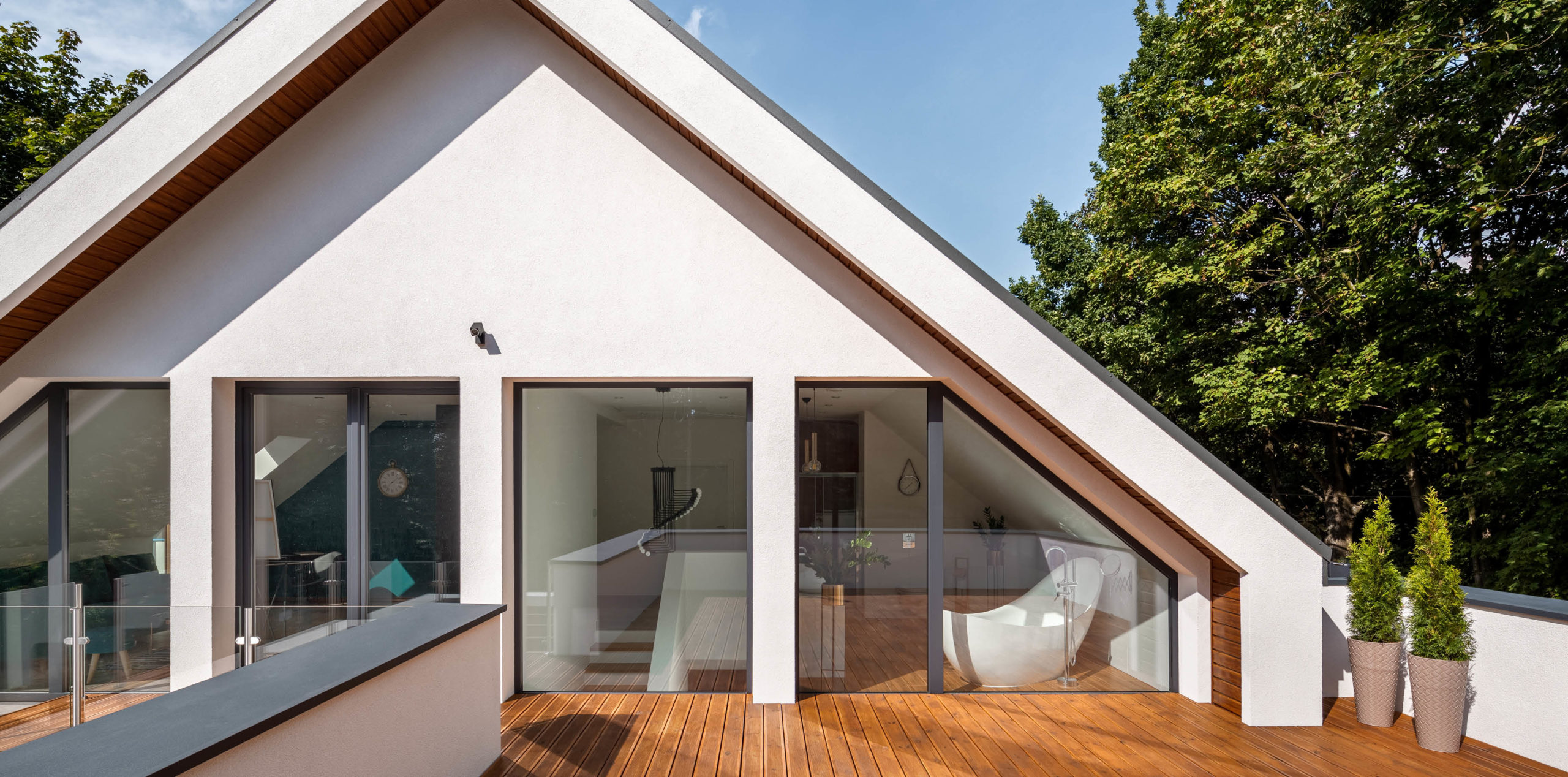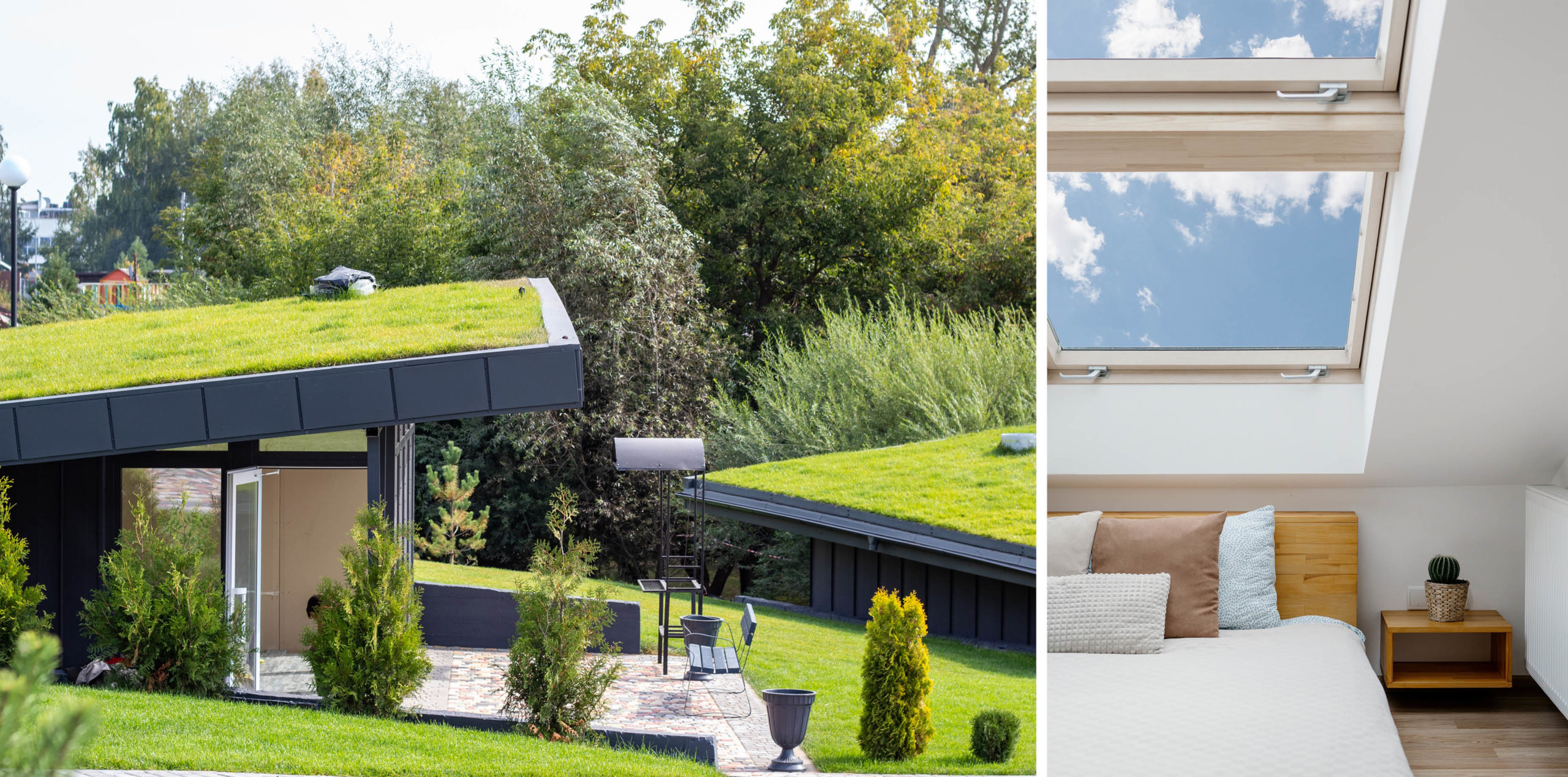by Janice Henshaw –
When you think of going on a safari, what comes to mind? Seeing the “Big Five” in Africa – lions, leopards, elephants, rhinos and giraffes? Or perhaps a West Coast Sea Safari to experience whales spouting, soaring eagles, seals and sea lions? How about going on a Green Roof Safari to learn about green roof technology? These tours are happening in North America and Europe – the beginnings of an exciting new way to design our homes, or a traditional way coming back to life?
Silvia Bonet, a partner at Finlayson Bonet Architecture, says that adding a rooftop terrace or patio is an excellent addition to the attractiveness and usability of your roof. “Since the pandemic, we have seen that having an oasis at home to retreat to and get fresh air or alone time is good for our family’s health and wellness. A livable outdoor space using part of an existing house footprint can provide entertainment space, unique views, a place for potted plants and a barbecue. This is particularly valuable when space is minimal on the ground.”
Before embarking on the project, Silvia says the property owner needs to consult with an insurance company and professionals to determine the best type of green roof. At the design stage for a rooftop patio, there will be an evaluation by a structural engineer who will properly size the structure. Adding a rooftop patio to an existing structure needs to be properly reviewed by qualified professionals to assess weights, drainage, and waterproofing. “Like many,” Silvia says, “we are concerned about the environment and climate change and having a green roof could provide some of the answers we are looking for.”
One day it will be a wonderful sight to fly over a city with thousands of low-pitch green rooftops and healthy, air-rejuvenating layers of trees, gardens and grasses. Until then, many of us will continue to live in homes with conventional roofs such as hip roofs (slopes on all sides) or gable roofs (triangle style with a base and two sides meeting at the ridge). If we live amongst trees, we will have maintenance tasks such as cleaning out gutters to prevent rainwater from backing up and removing branches and leaves. In shady areas, green moss will thrive on our roof – and no, that doesn’t constitute a “green roof.”
It’s best to check with your roof manufacturer or installer before cleaning or making any changes to your roof so that you don’t void your warranty. Brian MacDonald, Shingle Division Manager at Parker Johnson, says that just like Chevrolet expects you to keep your vehicle clean, the manufacturers of roofing material expect customers to maintain and keep their roofs clean.
“The biggest fallacy out there is to use laundry soap to clean fibreglass or asphalt shingles says Brian. “I cringe when I drive by and see people scrubbing their roofs with Tide or some other dry laundry detergent because it will destroy the shingles. The soap has a degreaser chemical that works well on the spots on your jeans but creates holes in shingles.” Other people think it’s an excellent idea to power wash their shingles and find out too late that they have damaged them.
The right way to clean a shingle roof, says Brian, is to lightly brush off the moss and other material in the summer when it’s dried out. Then on an overcast day, clean the roof with a 50/50 water and bleach mixture – be sure to rinse it off within 30 minutes.” For a metal roof, you can use car washing soap or mild dish soap mixed with water, and even a zip wax to give it a protective coating. “The roof will not rot or be ruined if you get some moss or algae growing on it, but it will look awful.” There are reputable de-mossing companies that would love your business – stay safe and hire a professional.
Brian says they have discovered roof leaks in wood-burning chimneys that have been modified to use natural gas. When the chimney is no longer warmed and dried by the woodfire, the bricks and mortar, which are porous, will absorb water like a giant sponge in a storm with blowing rain. The good news is that the chimney can be sealed to prevent further leaks. Other things to check are the flashing and roof boots that seal off the various pipes venting through your roof. You want to ensure they are in good shape and not cracked – just as watertight as your well-loved Chelsea boots. Water can get in through the smallest of holes.
Skylights in roofs are lovely because they add such great natural light, but if they weren’t installed correctly or their seal is failing, they may whistle or make strange wind-related noises; that results in a “to do” item that demands priority. A friend of mine had a skylight fly out of his newly installed metal roof in the middle of a nasty storm; it landed gracefully in the bed of his pickup – and miraculously didn’t break – but I am sure it wasn’t fun to climb up a ladder in the dark to put it back.
Last but not least, there’s the inside of your roof to check out – the attic space. Here, you may discover leaks, mould development due to inadequate ventilation, or rodent damage. Rodent damage is a serious issue that should be addressed; mice can fit in a hole the size of a nickel, and rats coming in through ventilation screening or other openings can get in holes the size of a quarter.
For our comfort, Brian says it’s actually very rare for a quality roof that is properly installed to leak. Just like every other renovation or new build, quality of materials and quality of workmanship together ensure a job well done – and a good night’s sleep for the homeowner.





